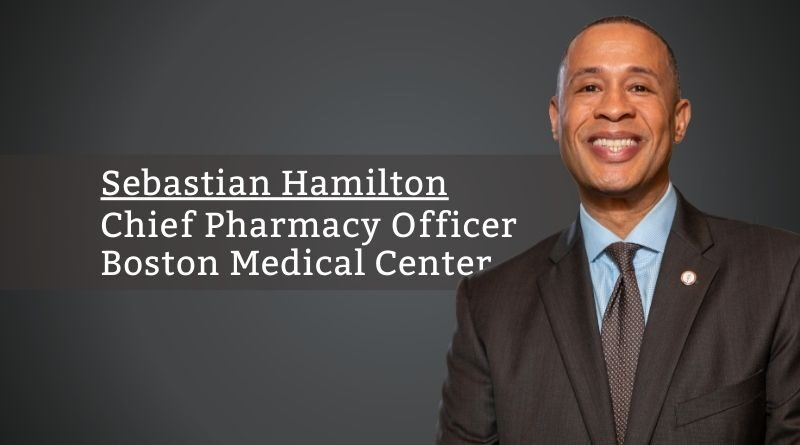How to Build a Successful Pharmacy Management Strategy?
By Sebastian Hamilton, Chief Pharmacy Officer, Boston Medical Center
An IT infrastructure build and integrity strategy; a favorable quantifiable clinical outcome strategy; a new business opportunity for considerable growth strategy; etc., no matter the area of focus, they all have the same intent and purpose as any well thought-out strategy; to take action on a conceived idea or initiative and charge established work streams to develop and execute a specific defined plan towards a desired favorable outcome.
A pharmacy management strategy is no different. There are few recommendations of best practices that I have come to appreciate and embrace consistently to increase the odds of a successful management strategy—no surprises here but always good practice to review.
No matter the area of pharmacy practice, a successful pharmacy management strategy starts with a firm grasp and a clear understanding of the organization’s strategic long and short-term goals that define success.
Once known and clearly understood, you tie them to how pharmacy contributes and the weighted level of importance towards achieving organizational success. This, in turn, will help create pharmacy goals in order of priority.
Communicate clearly why changes are needed and be sure to convey what’s behind changes with supportive examples.
A good way to think critically when structuring future pharmacy goals is to reflect and ask tough questions with honest answers towards previous goal performance. Questions like:
- How successful in the past has pharmacy been at meeting it’s goals?
- What worked well and should we do more of? Why did it go well?
- What goals did we not achieve and why?
- How do we now refocus to improve the odds of success moving forward?
The answers to these questions will well position you to start listing out the pharmacy’s short and long-term strategic goals in order of importance, being sure to note odds of success, threats to success and what specific work streams are needed to work towards success. Framing of:
- What are the work areas of focus for us?
- What timelines do these areas work and do they align with FY goals or beyond?
- What tactics will be deployed within each area of work?
- Perform a gap or SWAT analysis to understand where these areas of work are and what will be needed.
- Establish, assign, or identify as needed teams and individual member contributors who will have a specific area of focus; noting strengths and areas of support that will be needed. For the latter, identify ways to offer support by providing additional assets, e.g., analytics, clinical, strategy, etc., to close these gaps.
Once the teams have been established and their charge assigned, it is critical to provide clear and concise communication. There is an abundance of information on ways to effectively communicate, so I will not go into specifics here. However, I have found that when a project or initiative does not go as expected, invariably the reason is a breakdown in communication. As a leader, please be mindful of this and the adage, “It’s not what you say, but how you say it.” Effective communication establishes clear boundaries relative to area of focus, with pointed expectations delivered tactfully. Communicate to the team:
- Why this project/work/initiative is important,
- Get specific on details such as who will do what and by when.
Set the team in action towards a common primary objective and speak crisply to
- How will we measure progress?
- How will we address challenges/barriers? And,
- What does success look like?
All while keeping the teams motivated and engaged by providing positive feedback often.
Arguably of equal importance as a firm emphasis on effective communication, is empowering your teams to own and lead the work. Empowering your team is an invaluable asset that will reward everyone and make the work more cohesive, increasing the odds of success.
You have invested time and effort in creating and developing effective teams. Have worked closely with them on projects. No one is better positioned to know how prepared they are to take on and lead a specific project to a successful outcome than you. As such, you are encouraged to trust your teams to own and lead the work. Empower them to hold themselves accountable after communicating clear objectives and expectations. Expect them manage themselves while making progress with a fair degree of autonomy. While mission-critical initiatives and projects may require more touchpoints from you, be careful and resist the urge to micro or over-manage. This can manifest in many ways and inadvertently look like asking for intimate project-specific details/updates, or busy work that redirects focus towards achieving a certain level of quality for the details/updates, thereby acting more of a distraction to the team than actual value add.
As an effective manager, you must be prepared to make tough decisions when goals are not progressing according to plan. As such, you are to make changes to the strategic approach or team early and as often if needed to ensure the goals do not get sidetracked and risk failure. Communicate clearly why changes are needed and be sure to convey what’s behind changes with supportive examples. Take note to frame missteps as growth opportunities and are fine as long as the team learns and improves. This will ensure continued buy-in as changes are made.
Finally, because there are a seemingly incessant number of projects and initiatives to take on, we tend to close out one project to only then move onto the next without any notice or review. It is important to celebrate milestones and “wins”, giving thanks and taking the appropriate time to acknowledge all involved in a job well done. This is also a good opportunity to reflect on what went well and could have gone better.
These basic yet important management strategies will set you and your team up for continued success when addressing the next challenge.



